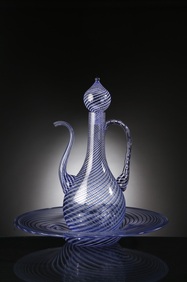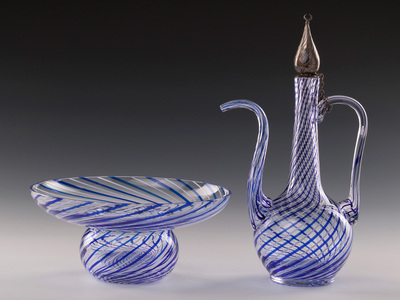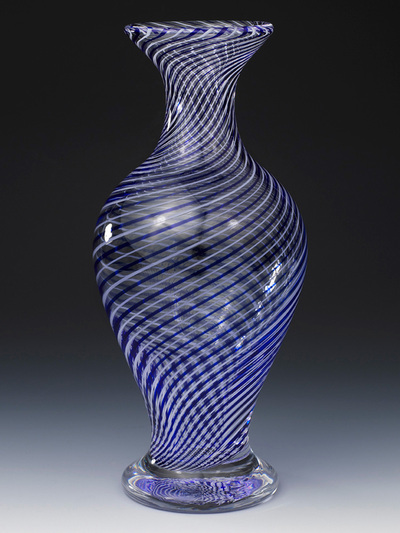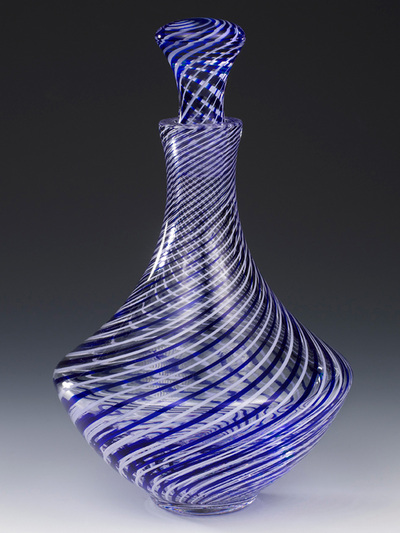
Cesm-i Bulbul “ Eye of Nightingale ” is the name of a glass arts technique that was invented by Dervish Mehmed Dede of the Sufi Order after he was sent to Venice by the Sultan Selim III, in late 18th century.
Mehmed Dede opened a workshop in Beykoz district after his return from Venice where he studied Opal Glass techniques. Later by his improvements on the " Filigrano "techniques he studied in Venice, ' cesm-i bulbul ' techniques were born and perfected. But, the person who spreaded the technique and made it well known was Fethi Ahmet Pacha from the Topkapi district.
Cesm-i Bubul technique is important because of the special methods it introduced to glass works, as well as the hard work and creativity it requires in order to produce it. Most outstanding feature is that very thin and colored glass sticks are aligned toghether and melted in very high temperatures to be bound with the body of glass that makes the mass of the object, while keeping the shape inact and prevent blending which requires very high level of craftsmanship and experience. The glass is then twisted to form the final shape called Cesm-i Bulbul which demonstrates mastership of the artist.
Many different kinds of objects -like vases, jars, glasses, plates- can be produced in Cesm-i Bulbul style.
http://www.turkishtradition.net/?p=234
Mehmed Dede opened a workshop in Beykoz district after his return from Venice where he studied Opal Glass techniques. Later by his improvements on the " Filigrano "techniques he studied in Venice, ' cesm-i bulbul ' techniques were born and perfected. But, the person who spreaded the technique and made it well known was Fethi Ahmet Pacha from the Topkapi district.
Cesm-i Bubul technique is important because of the special methods it introduced to glass works, as well as the hard work and creativity it requires in order to produce it. Most outstanding feature is that very thin and colored glass sticks are aligned toghether and melted in very high temperatures to be bound with the body of glass that makes the mass of the object, while keeping the shape inact and prevent blending which requires very high level of craftsmanship and experience. The glass is then twisted to form the final shape called Cesm-i Bulbul which demonstrates mastership of the artist.
Many different kinds of objects -like vases, jars, glasses, plates- can be produced in Cesm-i Bulbul style.
http://www.turkishtradition.net/?p=234



